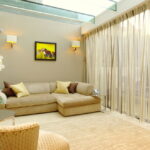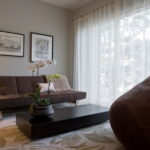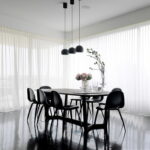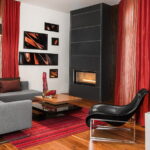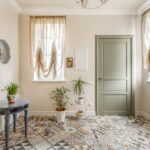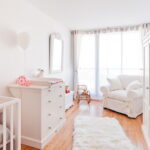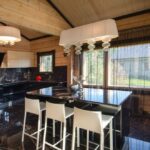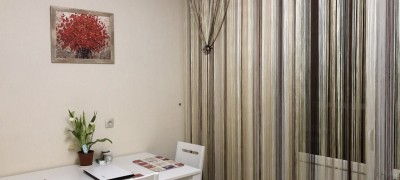Tulle in the interior of the house
The selection and design of curtains and tulle is a responsible task. They are a decorative element and give a finished look to any room. The drapery of the window sets the style, emphasizes the sophistication of the interior design, demonstrates status, and emphasizes the taste with which a room or other room is decorated. It is fashionable and interesting.
They serve to protect against the penetration of bright light into the room, soften gusts of wind, at the same time they are a decoration, an element of design.

Tulle lets diffused light into the room, creating a feeling of peace and comfort. Therefore, its other name is "day curtains". Colored transparent fabric paints the walls in soft tones of various shades, with the right selection, it is in harmony with the color of furniture upholstery, bedspreads, and other design elements.
Functionally, tulle can visually add space to a small room, in some cases it hides the uneven openings of the window and balcony door.

The most fashionable tulle for home
Tulle does not go out of fashion for a long time, only the style, color scheme and drapery elements change. There are sharp fashion trends in the selection of transparent materials and classic ones, but in all cases the main characteristics and aesthetic component remain unchanged.

Varieties of tulle
The word tulle is of French origin, this is the name of the city in the New Aquitaine region - Tulle. It still retained elements of the architecture of the Carolingian era, and the production of lightweight fabrics began there, which was named after the city.
Technologically, tulle is made from threads; there are special machines for this. There are two main types:
- Smooth is produced on tulle machines from two or three thread systems.
- The curtain is produced on lace machines.
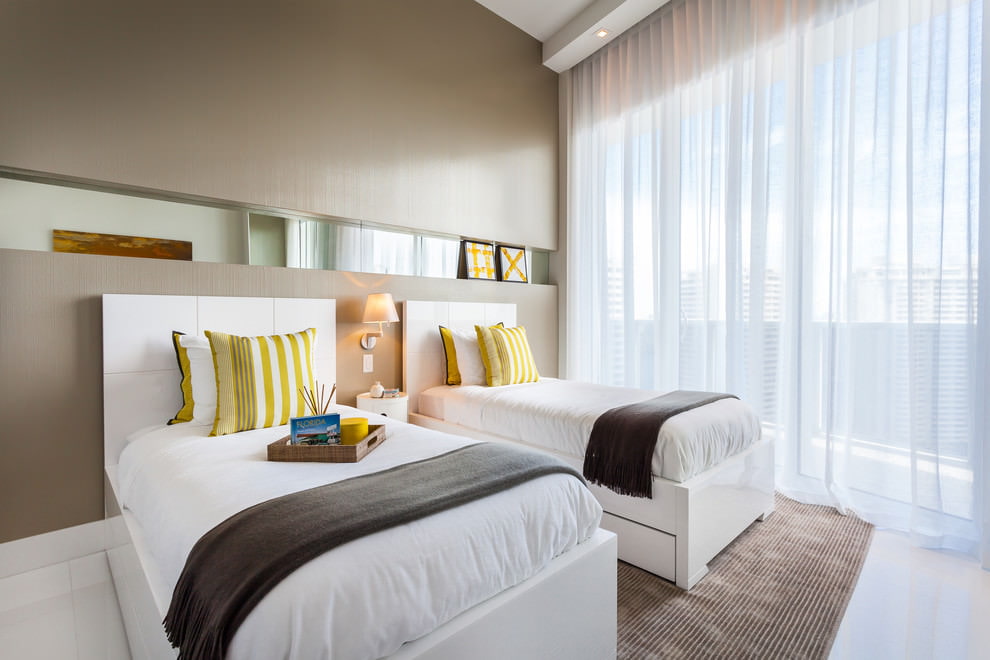
Various types of threads are used for production: in the classic version, cotton, silk, semi-silk threads were used. Modern designs are made from mixed fabrics, using polyamide and polyester fibers.
In tulle materials, there are cells between the base and the weft, they can be of different sizes and shapes, and form different patterns.
The main properties of tulle fabric that made it popular:
- Lightness, very light weight.
- Airiness, permeability to air currents.
- Transparency or translucency, light permeability and light diffusing effect.
- Easy to handle and maintain, although a certain amount of care is required: delicate fabrics require careful handling.

The design of the tulle depends on the type of fabric and on the texture.There are several varieties.
Tulle mesh
Such a prosaic name bears a transparent fabric made of natural and artificial threads, weft threads and vertical fibers are tied in a knot, simple or twisted. As a result, a rather large open space between the threads is formed, similar to a net, which can be of small and large knits.
This type of fabric is often used as a background for curtains, since it does not interfere with the penetration of sunlight. Thicker fabrics are required to protect from sunlight.

One of the options for this type of tulle is a cobweb, silk and synthetic fibers are intertwined in it in a rather loose way, an almost weightless version of the fabric is obtained. It may have embroidery.
Organza
Organza has traditionally been made from natural fabrics, silk and cotton threads.
In the modern version, synthetic polyester additives are used. The fibers are twisted together so that a dense texture is obtained. This allows you to create matte or glossy fabric varieties.

Tulle with monograms
This is a kind of tulle fabrics designed in the form of patterns applied to the base. Initially, monograms meant drawings of letters that were the initial letters of the owner's name and surname. Gradually, the design of the jewelry was transformed, the ornament does not necessarily contain letters, but the general techniques for creating monograms remain.

The drawing is applied to the base by printing or etching, complex weaves are formed, plant motifs and complex patterns are visible in the ornament.
Veil
Curtain veil is a thin fabric of plain weave of threads. It belongs to the type of translucent canvas, which is distinguished by a matte sheen with a slight sheen. The material for the manufacture is, most often, polyester fiber.
The fabric is soft, lightweight, pliable. The drapery is easily formed: it can be used not only as a curtain, but also for lambrequins, grabs, frills. Complex shapes are assembled from it in the form of a flower or a bouquet.

The veil can be painted in any colors, different design elements are used: spraying, printed drawing, embroidered patterns.
It is often used as a companion to curtains.
Lace tulle
The openwork or lace type of tulle involves the interlacing of threads in the form of an ornament. Lace can be present throughout the entire field of the canvas or take up a small area. It can be placed horizontally or vertically, it can occupy one corner, or it can only decorate the edge of the product. Openwork is subdivided by manufacturing techniques into
- sewn;
- embroidered;
- bobbin.

When using embroidery, monograms or other design elements are made with silk or metallized threads. Satin and other inserts can be used.
Tulle pleated
Pleated tulle is created by creating parallel pleats. Pleated fabric involves laying folds of various widths, they can vary from 0.5 to 5 cm.
As a result, a canvas is obtained in which the folds look in one direction, either these are opposite folds, or bow folds. Bow folds - form-creating, creating a silhouette, consist of two one-sided folds, the outer folds of which are directed in different directions, and from the seamy side the folds are turned towards each other with the inner folds butt-to-side.

A similar shaping method is used when the fabric is shirred. In the case of corrugation, the folds may taper towards one end.
This creates a special geometric design that emphasizes the austere forms of the interior.
Pleated tulle and corrugation consists of fine-mesh fabrics, since the creation of folds requires a certain smoothness. How the corrugated tulle looks in the interior can be seen in the photo.
Caring for pleated tulle requires a neat and gentle approach.
Champagne tulle
Champagne tulle can be made from various types of tulle fabrics. It is distinguished by a special color. Champagne color is light golden, similar to the color of classic champagne, from which the name comes.
Designers define it as soft, delicate, airy, gentle. It looks noble, softens the luminous flux much better than white. This predetermines the frequent use of champagne tulle in a variety of interiors, using different style trends and tendencies: from classic to avant-garde.

You can see the champagne tulle in the photo in the interior.
Selection of tulle design
Selecting tulle in such a way that it matches the design and style of the interior, furniture design, color and style of wallpaper is a separate creative activity. Sometimes it all starts with the design of the window area, and in this tasteful manner, the further formation of the image of the room takes place. Therefore, it is so important to choose curtains and tulle and their corresponding additional elements: lambrequins, tie-backs, decorative garters, frills, etc.

Color matching
The first thing to start with the selection of tulle is to determine the color scheme.
There are certain rules for the selection of tulle for the design of the window area.
- If curtains or drapes are used, then the color of the tulle is selected according to the principle of contrast or complement.
- If there is a pattern on the curtain or, the tulle can repeat it, or have a pattern that complements the curtain. Otherwise, the tulle fabric is preferable to a neutral one, without any ornaments.
- In the interior, the main area is selected, which will be accentuated, and it will determine the color combinations. If the emphasis is on the window area, the color of tulle and curtains can become the leading one. In other versions, tulle plays the role of a background in relation to interior items and the color is matched to their color scheme.
- If the room does not have style zoning, you can choose tulle in neutral tones. The classic version is white. It looks very advantageous and softens all shades of beige or champagne.

Modern novelties
Recently, new options and models of tulle fabrics have appeared. It is worth paying attention to such types as
- Kiseya. It is a canvas of freely directed vertically threads. They hang down, forming waves of fibers, can be decorated with various decorative elements in the form of beads, beads, feathers. It can be draped either as a separate element or in combination with curtains.
Kiseya is convenient to use not only for window decoration, but also for zoning a room, for decorating doorways, since individual fibers do not interfere with movement, while closing the space. - Curtain - batik with photo printing. This is a novelty in window decoration: the window looks like a separate piece of art. There are two main options for such tulle. In one case, folds are not used, so that the outlines of the objects depicted on the canvas are not disturbed.In the second case, folds, folds and waves do not so critically affect the perception of the pattern, this is typical for images of the sky, sea, forest, meadow. For such paintings, uneven fabric adds volume, airiness, completes them.

The combination of tulle with interior elements
Tulle as an element of the interior should be combined with other components. The principle of zoning is used in most design styles.
- The classic style of design assumes the presence of dense, heavy curtains in combination with light, airy tulle. Most often, light colors of transparent curtains are chosen, the pattern on them can repeat the ornament of the curtains.
- The modern style of room decoration is most often associated with a plain soft canvas of various colors and shades. It is selected in contrast to the general color scheme of the room or repeats this general tone.
- The modern style goes well with striped curtains, or plain ones. The color should match the upholstery and wallpaper.
- In the Provence style, as a rule, there are light curtains with a soft floral print in mint or pinkish color. Tulle is also matched to them with a light, soft texture, so that you can collect it in lush folds. Variants with embroidery and floral patterns are not uncommon.
- The Scandinavian style is simple and concise. Heavy curtains are not in use, roller curtains are more characteristic. White or light tulle without any decoration with light folds most closely matches this option.

How to choose the right tulle
The choice of window fabric for the premises of the apartment will be different depending on the nature of the room.
For the hall
You can pick up tulle of various textures and colors. These can be plain fabrics combined with curtains. Elegant textured options also look good, tulle with monograms decorates the room, especially in combination with denser curtains. White tulle with ornaments and light lace trim will decorate any room, create a festive atmosphere. If the windows face north or west, it is good to use tulle in warm colors, this creates coziness.
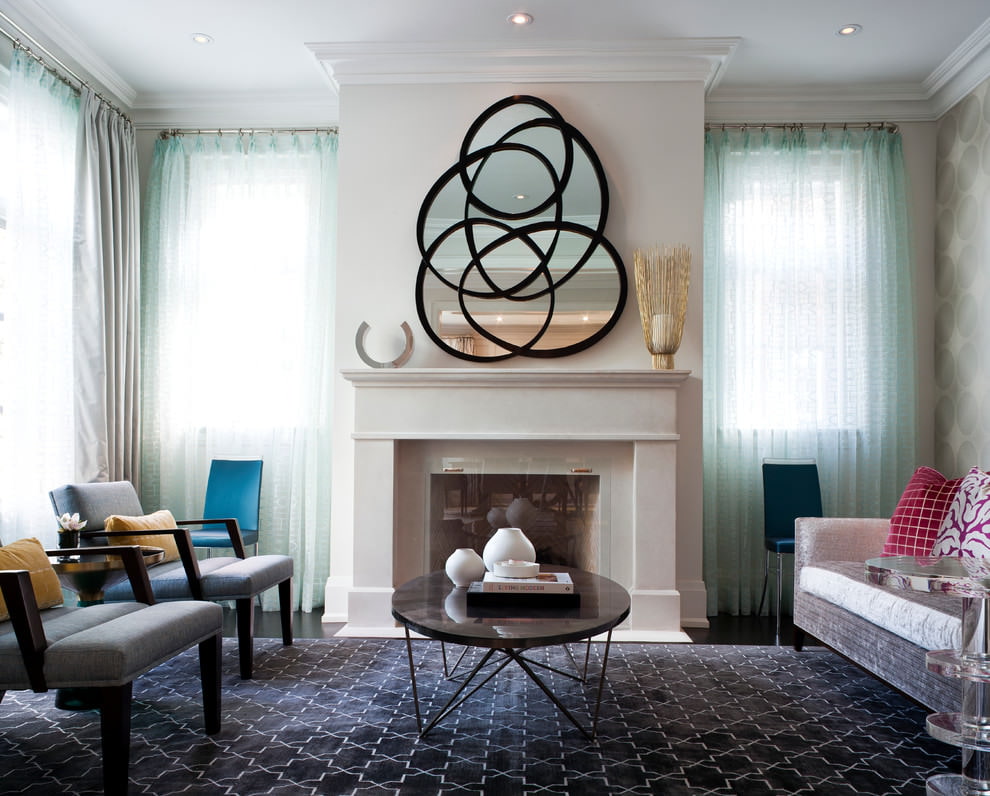
For the living room
The living room will be decorated with an openwork version, organza will do. It is interesting to decorate the window with a curtain with an embroidered ornament or a pattern applied by photo printing.
Various colors are permissible, combined with wallpaper and furniture. If the owners of the room do not adhere to a certain style, tulle of neutral colors may be the most successful: white, with light shades of beige, pink, mint colors.

Lovers of openwork can be pleased with lace options.
For kitchen
For the design of the kitchen, functionality and convenience are above all important. Mixed fabrics are suitable, those that do not wrinkle, they are easy to wash. Many housewives like to use short, cropped tulle options. The color range is not limited: someone prefers bright country-style curtains, someone - Provence. Many opt for neutral tones.

For bedroom
The bedroom is a resting place, and the requirements for the linen on the windows are such as not to cause irritation with contrasting tones and bright colors. Choose pastel shades of beige, pink, green, blue.
Tulle of a delicate, soft texture will suit most of all. Soft folds, lambrequins, wide hooks will complement the design.

For children's room
The children's room is the most cheerful in the house. The child should feel comfortable. On the one hand, it needs to be protected from the bright sun, and on the other hand, create a good mood. The color version of the tulle is most suitable. Photos of nature, heroes of fairy tales and cartoons on the curtains will decorate the room.

How to hang correctly
Beautifully hanging a curtain on the windows means decorating the room, creating an overall good mood.
Various devices are used to fasten the tulle:
- Ceiling or wall cornice. It should not be too bulky as for curtains. Lightweight, airy material also offers easy attachment.
- You can use a string of metal or dense fishing line. It is almost invisible and blends in with the lightweight fabric.
- Point fastenings using clips are often used for arched or other irregularly shaped window openings.

The assembly of tulle on the cornice can be carried out using various methods. Drapery is used
- Bow and counter folds.
- Small gathering on a special tape.
- Assembled "marquis".
- With puffs and tucks.
There are special techniques for attaching thin tulle and curtains to the same rod.

Care rules
Caring for fine fabrics requires careful and attentive attitude.
Dry cleaning is carried out at regular intervals using a vacuum cleaner. It is best to use special attachments.
When it is time to wash, the tulle must be carefully removed from the fasteners. Washing is best done by hand to avoid damaging or warping the fabric.

First, soak in warm water, in a solution of detergent, which is selected depending on the composition of the fabric. You can soak it again, since mechanical action on the canvas is contraindicated. After that, gently pressing on the fabric, rinse.
You should not squeeze the tulle too much, let it be better for the water to drain itself. It is worth hanging very evenly so that there are no distortions and stretching of the threads.
Ironing after washing, especially if the fabric is wrinkled. In most cases, tulle does not require ironing. Then hang onto a curtain rod or string, or fold neatly and put away for storage.

Video: examples of window decoration with tulle

